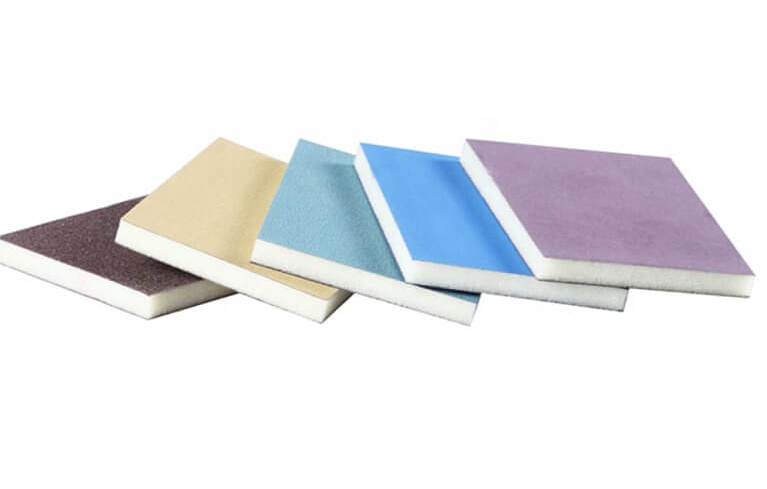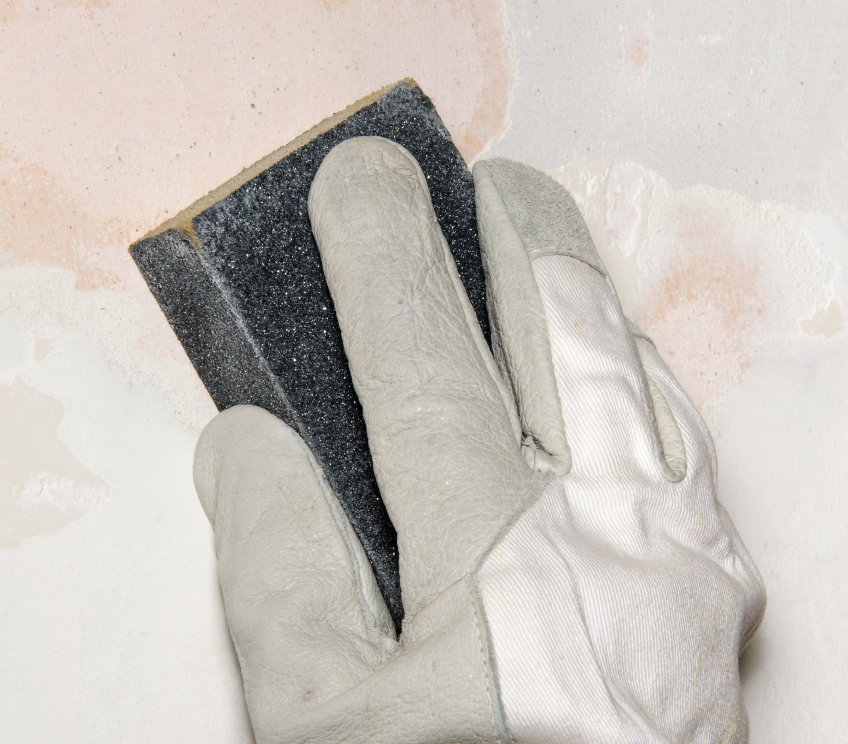Coated abrasives are used for varying levels of material removal, surface finishing, and polishing. They may be turned intodifferent sanding paper types such as abrasive belts, large rolls, sanding disc pad, and sandpaper, and sanding block, etc.Have you ever wondered what happened to the sanding sponge? Sanding sponges are useful equipment when used correctly. But are they suitable for every sanding task? I’ll explain the sanding sponge in more detail below.This article will focus on what is a sanding sponge and how to use a sanding sponge?
What is a sanding sponge
Sanding sponges are foam sponges which are impregnated with grit of various sizes, allowing people to use the sponges as abrasive tools to smooth various surfaces. Sanding sponges are sanding tools that look like sponges and are used to sand wood, drywall, and plastic. Sanding sponges are similar to sandpaper, however the abrasive substance is connected directly to the sponge’s foam rather than a piece of paper.
Sanding blocks made of froth with rough surfaces of various corn meal. They are equivalent to sandpaper. Sanding wipes and squares are compelling for sanding in corners or strange surfaces to which sandpaper won’t adjust. A sanding square or wipe allows the client to apply more strain the hard way, which can bring about a further developed completion.
Advantages of sanding sponges
There are a number of advantages to using sanding sponges when compared with sandpaper.
- Sanding sponges are pleasant to use.
- Its work quickly.
- Sanding sponges having a surface that channels dust.
- Thet are are able to access confined spaces.
- Sanding sponges are resistant to wear.
- Sanding sponges can be washed.
One of the biggest bonuses is the fact that sanding sponges can be washed to remove clogged material, and they are very long lasting. As the foam and grit start to wear away, successive layers are uncovered, allowing a single sponge to be used on many situations and in a variety of settings. The washability is also a big plus when people are working on projects which tend to clog sandpaper, such as sanding paint, putty, and similar materials. In view of the many advantages of sanding sponge, it is widely used. Today I mainly introduce the applications of BINIC sanding sponge on wood and paint.
Here are some different types of sanding sponges
- Sanding sponges with varying grits
- Sanding sponges with dust channels
- corner sanding sponge
Choosing the right sanding sponge grit
On many projects, we usually use different grits of sandpaper during work, like start with a coarse grit and then switch to a finer grit for a smooth finish. First of all, you can choose your paint sanding sponge between 3 different grits, considering your needs.
- Coarse: To prepare surfaces for better primer and paint adhesion;
- Superfine: Ideal for preparing surfaces for paint and blending;
- Microfine: Great for final blending / fading out preparation where a fine grit is required.
How to Use a Sanding Sponge
Here are some pointers to keep in mind when using a sanding sponge.
- Wear eye protection at all times. Wearing a face mask is also a good idea.
- Begin with a low grit sandpaper; the lower the grit, the rougher the sandpaper and the more material removed. Begin with 80grit or even 40grit (for really tough surfaces) and gradually work your way up. You’ll want to work your way up to 22O grit for most surfaces.
- Sand with the grain rather than across the grain. Sanding with the grain produces the cleanest finish and eliminates scratch marks.
- Mark the area you want to sand because a sanding sponge can remove material quickly. You don’t want to sand off a necessary corner by accident.
- Apply equal pressure and let the sandpaper do its work. A light, comfortable pressure is all that is required to avoid scratches. If you’re not removing enough material, try a lower grit before you exhaust yourself.
Sanding sponge in car paint using
Using car paint sanding sponges is just like getting your cars “manicured”: use them to sand or prime bumpers, headlight openings, door handles, door jambs, or any complex shape of the vehicles.The soft, flexible foam backing conforms to virtually any profile on a vehicle, so you can achieve a flawless look even on the most difficult shapes.
Sanding sponge in woodworking
There are also many applications of sanding sponges in woodworking. Mainly in doors and windows and carpentry furniture. Many brands of sand block for wood are becoming more and more popular.
Using Sanding Sponges While Dry Sanding
Similar to using ordinary sandpaper, dry sanding with a sanding sponge is also possible. Move the sanding sponge along the material while holding it firmly in your palm. Always sand wood along the grain when doing so. Make sure your drywall sanding block pressure is steady and forceful.
Using Sanding Sponges While Wet
Sanding sponges can also be used for wet sanding, which is less forceful than dry sanding and produces less dust. It’s typically one of the final passes, and it can assist remove scratches from the previous passes that were caused by the sandpaper or sanding sponge.
Wet sanding sponge sanding sponges should be dipped into water and wrung out until damp but not saturated. The sponge will need to be rewet as it dries out, and if it becomes blocked with debris while you sand, you may need to rinse it in water. Before continuing the finishing procedure, allow the surface to completely dry.
Taking care of a sanding sponge
Although sanding sponges are reusable, they must be cleaned on a regular basis. To remove the dust from the sanding sponge, use an air compressor or other equivalent air source. You may also brush or pluck particles off the surface of the sponge.
If the soft sanding sponge has to be thoroughly cleaned, immerse it in water, swirl it about, and squeeze it a few times to get the particles out. Add a few drops of mild detergent to the water to help it clean better. Before using the sponge again, thoroughly rinse it, squeeze off any leftover water, and allow it to dry fully.
Conclusion
Sanding sponges are great tools. The BINIC Sanding Sponge base features high-density sponges constructed from high-quality brown corundum with special treatment and unique glue formula. Binic Abrasives has successfully designed and built a coated abrasives manufacturing line, realizing the large-scale manufacture of the best sanding discs, after years of technological research and sharpening. Please get in touch with the Binic – coated abrasives manufacturers if you still have any queries.


